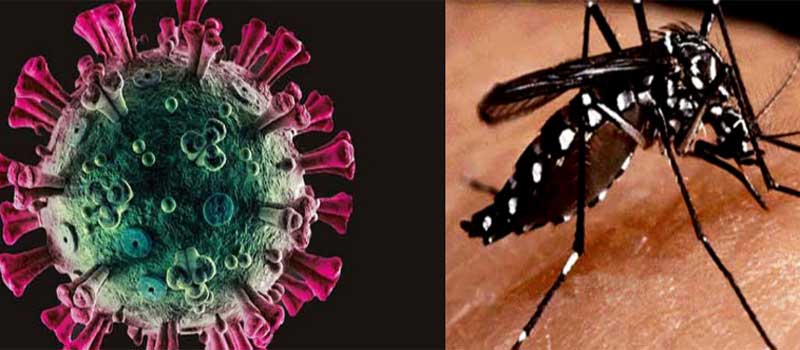
For a few weeks now, the pace of the Public Health personnel, assigned to the Anti-Vector Campaign, has been much busier in some areas of the local geography. The first sound of a bazooka, in the Fernando Betancourt neighborhood of this city, reminded the residents that in the midst of the COVID-19 pandemic, the Aedes aegypti continues to nest in places where the measures established for its eradication are not being complied with.
Las Tunas, Cuba - Many of the local residents were surprised to see their comrades dressed in gray in front of their doors, especially at this time when visits are a threat. But the inspections of the homes, precisely now, are intended to prevent the spread of two diseases at the same time, whose effects on the population are just as lethal.
Dr. Aldo Cortés González, deputy director of the Provincial Center for Hygiene, Epidemiology and Microbiology, assures 26Digital that the risk of arbovirus begins now, with the approach of the rainy season and, furthermore, because the presence of the Aedes aegypti is high in the territory, more so in health areas like the Guillermo Tejas and Gustavo Aldereguía polyclinics, in the provincial capital; and in the Romárico Oro, in the municipality of Puerto Padre.
This year we haven't had any transmission," says the doctor, "but there have been cases of the disease in Puerto Padre, supposedly from travelers, but without local transmission.
Our strategy at this time is to strengthen the inspection of homes to eliminate existing outbreaks and prevent two epidemics from occurring at the same time, which would be very difficult for the population and public health personnel.
Individual responsibility is always vital in this historic struggle. Now that many people are staying at home for longer, more attention must be paid to this issue, eliminating potential breeding grounds and making the family self - control extreme.
The campaign against the vector remains active; of course, complying with the measures established in the prevention of the coronavirus. The operator must carry the mask and never work with a cold, but the houses must be inspected to ensure the safety of the people.
TWO EPIDEMICS STALKING AMERICA
It is not, far from it, unique to Cuba. Dengue has a high incidence in tropical climates, which is why it has shaken the Americas and continues to do so today. In a recent report, the Pan-American Health Organization (PAHO) warned that the region is facing the "worst epidemic" of dengue in the history of the continent.
According to the report, it is estimated that the incidence will remain high in 2020. The first semester will be very complex for the southern cone and the year has begun with situations of high transmission in Paraguay, Bolivia, Brazil, Colombia, Costa Rica, Honduras, Mexico and Peru. It states that after two years of low incidence (2017 and 2018), in 2019 there were 3.1 million cases of dengue, the highest figure in history.
PAHO specialists warn that as COVID-19 continues to spread in the Americas - more than 386,755 cases have already been confirmed - there is an urgent need for a joint response by the American governments to avoid overburdening the health systems.
They say that the difference between the Americas, and especially Latin America, and other regions is that communicable diseases have a greater impact and the health system must be prepared to manage patients adequately from the primary care level to avoid an excessive increase in cases.
Experts agree that dengue and coronavirus can be confronted by taking the same measures, which in the case of dengue should focus on eliminating breeding grounds for the transmitting mosquito. They say that hand washing, cough control, avoiding close contact with people who have symptoms, and following recommendations for social isolation are fundamental measures that the population should adopt.
DIFFERENTIATING SYMPTOMS
The symptoms of dengue fever are high fever, muscle aches, vomiting and diarrhea. These ailments are not respiratory. Instead, the coronavirus causes dry cough, fever, respiratory distress and general pain, but ruling out one disease or another is always the responsibility of health care personnel.




